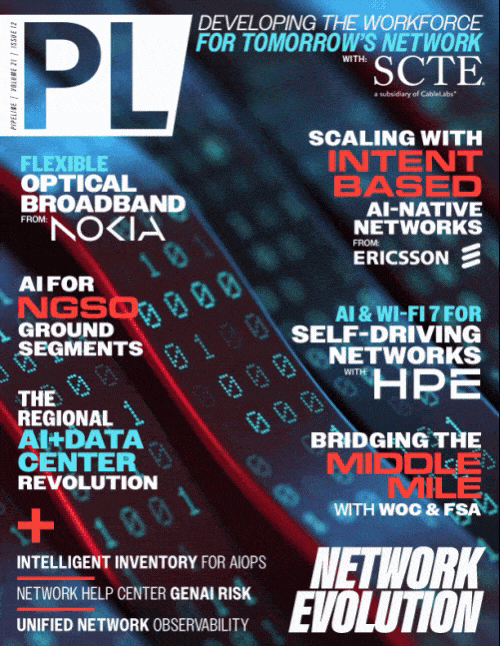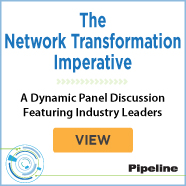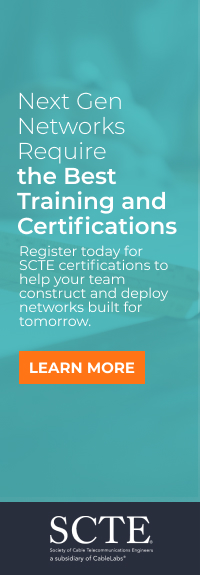Letter from the Editor

Like it or not, the world is becoming increasingly connected. There are unstoppable forces at play, and there is no sense in trying to fight them. You might as well sit back, relax, and try to enjoy the ride. And there is an upside. There are tremendous and abundant opportunities to capitalize on making ubiquitous connectivity a reality on both a global and extraterrestrial scale.
This may be uncomfortable for the old dinosaurs who remember when cc: meant sending actual physical carbon copies to the stated parties. They will continue to be endlessly tortured by needing to log in to their Microsoft or Google accounts, access their email, while receiving short codes by text to their mobile phones, just to have to complete innumerable Captcha puzzles of fire hydrants, crosswalks, and motorcycles – just to access the most mundane information. But the mere fact that I am able to be anywhere on earth and access limitless information through an Artificial Intelligence interface using a voice prompt in seconds is staggering to realize. But that doesn’t mean it doesn’t come without risk.
The year before Edward Snowden blew the whistle on the NSA PRISM project, Pipeline exposed the nexus point between legislation (such as the US Patriot Act, CALEA and BEAD), technologies that were becoming commercially available from named companies within the legislation (like Microsoft, Facebook now Meta, and Google), and large-scale government data center build outs (such as the two yottabyte data center that was underway in Utah). The conclusion was that if the government wasn’t already bypassing the constitutional protection of warrantless search and seizure in a shift toward becoming a totalitarian regime, it was only by the conscious decision not to do so. The foundation had already been laid, and years later, it turned out it was. And since then, it hasn’t become any better. Many of those same companies, plus some new ones like BlackRock and Palantir, are pumping tens of billions of dollars into AI and AI infrastructure to harness the power of all that data. You can’t even buy a TV today without having to sign a plethora of data usage consent forms. In the UK, digital identification (Digital IDs) is already required to access certain websites, and Digital IDs will soon be required to prove your Right to Work. The proverbial cat is out of the bag, and there’s no putting it back. So, I guess if you can’t beat ‘em, you might as well join ‘em. Just don’t say we didn’t warn you.
The good news is that the investment in AI, infrastructure, and networks is practically incalculable. The latest estimates come in at around $1.2 trillion, according to Bank of America analysts. That's enough to make one turn a blind eye to potential implications. And, let there be no mistake, there is a feeding frenzy underway for companies large and small to stuff their bellies with their piece of the pie
That’s not to say there isn’t a real benefit to expanding connectivity. Factory automation is making manufacturing safer. AI in healthcare is saving lives. Harnessing the power of data and networks is helping organizations improve operational efficiency. And expanding networks into rural and underserved regions provides access to education and information to bridge the digital divide. But to do these things, the workforce needs to be trained, the complexity must be tamed, and the risks must be mitigated, which is why this edition of Pipeline is so important.
In this issue of Pipeline, we examine the evolution of network technologies. SCTE looks at the changing dynamics and acceleration of broadband networks and the workforce training requirements for future networks using Proactive Network Management (PNM). Ericsson guides us through the new era of network transformation with AI, openness, programmability, sustainability, and equity. Hewlett Packard Enterprise (HPE) shows us how rules-based, AI-native Radio Resource Management (RRM) for Wi-Fi 7 and 6GHz is an imperative for connected devices. Taara analyzes the recent changes to BEAD and presents how Free Space Optics (FSO) and Wireless Optical Communication (WOC) can help bridge the middle mile and close the digital divide. Nokia demonstrates how thin transponders can help increase the capacity of optical broadband Networks. Atheras Analytics SAS examines the growth and complexity of Non-Geostationary Orbit (NGSO) satellite networks and how AI can help manage ground segments. Add-On Networks explores the exploding demand for AI, regional data center markets, and supporting infrastructure with third-party optics. FNT Software underscores the importance of network visibility and intelligent inventory for AIOps, autonomous networks, and digital twins. Highlight spotlights operational blind spots and how to address them with unified network visibility, and Pipeline’s Mark Cummings exposes network help center GenAI security threats. All this, plus the latest enterprise and telecommunications technology industry news and more.
We hope you enjoy this and every issue,
Scott St. John
Managing Editor
Pipeline



















